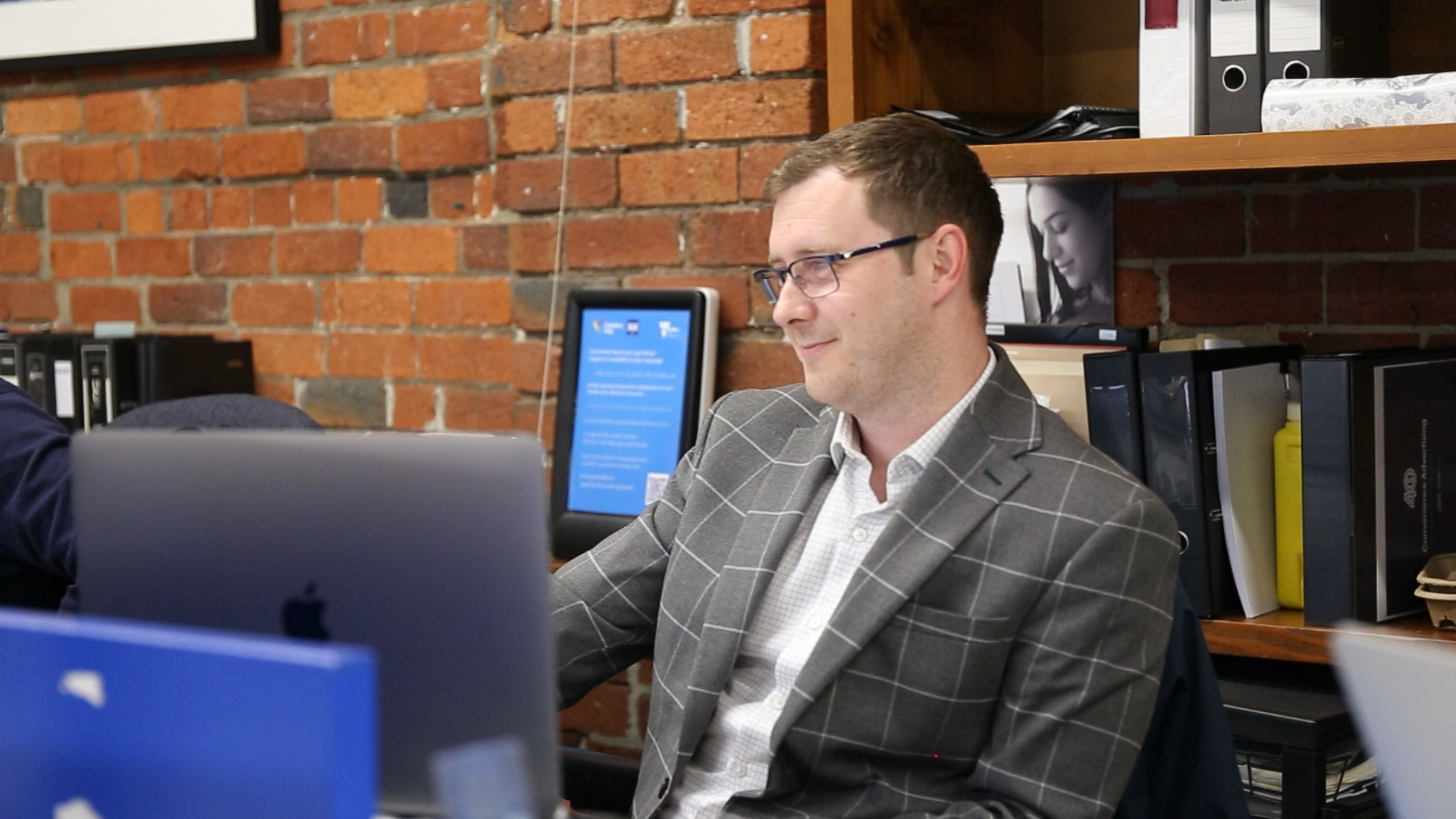

Tackling Period Inequalities in Australia
Menstruation is a basic biological function. Yet for many Australians, it comes at a high financial cost.
In 2024, Share the Dignity released The Bloody Big Survey, the largest menstrual health survey ever conducted, with over 153,000 participants[1]. The results confirmed what many already knew; period poverty is widespread, and it’s hitting those who can least afford it.
On average, Australians who menstruate will spend $10,000 over their lifetime on period products. Monthly costs sit around $20 to $25[2], which can make up a significant portion of income for low-wage earners.
In some remote communities, a single pack of pads can cost $15 to $25[3]. For First Nations communities, this is a persistent barrier to health, dignity, and participation.
One in five people who menstruate have been forced to use makeshift products like toilet paper or socks because they couldn’t afford proper care. The physical and mental toll of this is profound[4].
This is not just a health issue. It’s an equity issue. And it’s avoidable.
These social and political determinants prove that this is merely not just a health issue, but an equity issue, and an avoidable one.
Understanding the Impact: Who is Affected?
While 98.7% of respondents identified as female, the survey also included voices from non-binary people (0.9%), gender fluid people (0.2%), trans men (0.2%), and even a small percentage of males (0.1%), showing menstruation is not limited to a single gender identity[5].
Respondents spanned all age groups:
- 10 - 19 years: 4.1%
- 20 - 29 years: 18.9%
- 30 - 39 years: 33%
- 40 - 49 years: 27.2%
- 50 - 59 years: 12.3%
- 60 - 69 years: 3.6%
- 70 - 79 years: 0.8%
- 80 - 89 years: 0.1%
These demographics highlight that menstruation is a universal experience, with period-related challenges affecting a broad, and diverse spectrum of people.

Figure 1.1
The Reality of Period Poverty in Australia
One of the most significant findings of the survey is the extent of period poverty across Australia. Sixty percent of menstruating respondents struggled to afford period products in the past year. As a result:
- 1 in 4 extended product use beyond safe limits[6]
- 1 in 5 used improvised alternatives like toilet paper or cloth[7]
These behaviours not only compromise hygiene but increase the risk of infections and other serious health outcomes including toxic shock syndrome.
Though 4% of total respondents reported experiencing period poverty[8], the numbers were substantially higher in marginalised communities:
- 83% of Aboriginal and Torres Strait Islander people
- 78% of people with disabilities or chronic illness
- 83% of gender-diverse individuals[9]
In remote regions, access issues are compounded by cost, with period products priced between $15 - $25 per pack, which is double the urban average[10][11]

Figure 1.2
Systemic Links: Period Poverty, Health and Violence
One of the most alarming insights is the link between period poverty and domestic violence. One in three people experiencing period poverty have also reported domestic, family, or relationship violence, a figure that rises to 36% in Tasmania and the Northern Territory[12].
These intersecting issues include financial insecurity, lack of hygiene resources and unsafe environments, highlighting the urgent need for systemic action.
Stigma and Silence: The Hidden Cost
Menstruation is still heavily stigmatised in public, private, and professional life.
- 63% of respondents have missed school or university due to their period
- 68% avoided physical activity or sport
- 55% missed work, citing pain (91%), emotional distress (45%), or fear of leakage (33%)
- 77% hid menstruation-related sick days from employers
- 80% felt anxious managing their periods at work[13]
This stigma starts early. Children can get their periods as young as eight years old, yet menstruation education in schools often doesn't begin until ages 10 to 12, leaving many unprepared and isolated during a critical time[14]. Period-related absenteeism is estimated to have cost the Australian economy $9.6 billion annually[15].
Even in hospitals, menstrual health is neglected. 12% of respondents said they needed menstrual products during a hospital visit but couldn't access any and South Australia being the highest at 13%[16].

The Hidden Health Toll: Endometriosis and Iron Deficiency
Menstrual health is often dismissed as routine, yet many Australians experience serious medical conditions linked to their periods[17]. Heavy menstrual bleeding can cause or worsen iron deficiency, which affects 63% of survey respondents[18]. Among those reporting abnormal bleeding, 77% also had low iron levels, symptoms of which include fatigue, dizziness, and cognitive difficulties[19].
Endometriosis, a condition where uterine-like tissue grows outside the uterus, affects 1 in 9 Australians assigned female at birth[20]. Despite its prevalence, diagnosis is often delayed by 7-10 years due to stigma and under-recognition of severe period pain[21] [22].
Looking Ahead: Awareness, Access and Strategic Delivery
Menstrual inequity is not just a matter of access, it’s about visibility, stigma, and timely communication. A key barrier is reaching people in moments of attentiveness, without overwhelming or alienating them. This is where the bathroom environment plays a critical role.
Unlike high-stimulus public spaces, restrooms provide a rare pocket of privacy and cognitive relief. Kaplan and Kaplan’s Attention Restoration Theory (1989) describes how everyday life demands sustained, directed attention, studying, working, socialising, which leads to mental fatigue. [23]
In contrast, environments that allow for brief mental respite restore attention and increase receptivity to new information. The bathroom, often a momentary escape from the noise of a nightclub, a shopping centre, or a university campus, is such a space. In this context, individuals are more open to absorbing meaningful messages, including those about menstrual health and the stigma that surrounds it.
This is supported by measured dwell time: on average, patrons spend 2 minutes and 16 seconds in male restrooms, up to 2 minutes and 46 seconds in female restrooms and up to 12.5 minutes in parent rooms. In group settings, particularly common in licensed venues, this increases to nearly 3 minutes [24]. These moments offer a uniquely undistracted opportunity to engage people with targeted health communication.
Strategic Messaging Approach
The ability to tailor a gender-specific message holds true. Convenience Advertising leverages these insights:
- For women: messages that promote access to period care and direct pathways to support
- For men: content focused on normalising menstruation and promoting bystander responsibility
- For gender-diverse audiences: inclusive messaging that prioritises visibility, dignity, and belonging
Programs are geo-targeted using SEIFA and health access data to reach communities most impacted by menstrual inequity.
In a crowded media landscape, clarity and timing matter. By embedding health messages into everyday rituals, like going to the bathroom, we meet people in moments of mental availability, not just physical presence. This strengthens both immediate engagement and long-term public health outcomes.
[1] PwC Australia, 2021. The Impact of Period Pain and Menstrual Health on Workplace Participation. [online] Available at: https://www.pwc.com.au/press-room/period-pain-productivity-report.html [Accessed 17 Jun 2025].
[2] Change the Record, 2023. Period Poverty in Remote First Nations Communities. [online] Available at: https://www.changetherecord.org.au/ [Accessed 17 Jun 2025].
[3] Deloitte Access Economics, 2021. The Cost of Period Products in Australia. [online] Deloitte. Available at: https://www2.deloitte.com/au/en/pages/economics/articles/cost-of-period-products.html [Accessed 17 Jun 2025].
[4] Share the Dignity, 2024. The Bloody Big Survey 2024. [online] Share the Dignity. Available at: https://www.sharethedignity.org.au/the-bloody-big-survey-2024 [Accessed 17 Jun 2025].
[5] Share the Dignity, 2024. The Bloody Big Survey 2024: Menstruation in Australia.
[6] Share the Dignity, 2024. The Bloody Big Survey 2024: Menstruation in Australia.
[7]Share the Dignity, 2024. The Bloody Big Survey 2024: Menstruation in Australia.
[8] Share the Dignity, 2024. The Bloody Big Survey 2024: Menstruation in Australia.
[9] Share the Dignity, 2024. The Bloody Big Survey 2024: Menstruation in Australia.
[10] Share the Dignity, 2024. The Bloody Big Survey 2024: Menstruation in Australia.
[11] Share the Dignity, 2024. The Bloody Big Survey 2024: Menstruation in Australia
[12] Share the Dignity, 2024. The Bloody Big Survey 2024: Menstruation in Australia
[13] Bellas, O.M., Mulholland, M.A., Sivertsen, N., Kemp, E., Prichard, I., Velardo, S. & Shipman, J., 2023. Staff perceptions of support for early menarche in Australian primary schools: a qualitative study. Sex Education
[14] Bellas, O.M., Mulholland, M.A., Sivertsen, N., Kemp, E., Prichard, I., Velardo, S. & Shipman, J., 2023. Staff perceptions of support for early menarche in Australian primary schools: a qualitative study. Sex Education
[15] Share the Dignity, 2024. The Bloody Big Survey 2024: Menstruation in Australia
[16] Share the Dignity, 2024. The Bloody Big Survey 2024: Menstruation in Australia.
[17] Australian Bureau of Statistics, 2025. National Health Measures Survey, 2022–24. [online] Available at: https://www.abs.gov.au/statistics/health/health-conditions-and-risks/national-health-measures-survey/latest-release
[18] Share the Dignity, 2024. The Bloody Big Survey 2024: Menstruation in Australia
[19] Share the Dignity, 2024. The Bloody Big Survey 2024: Menstruation in Australia
[20] Australian Institute of Health and Welfare (AIHW), 2023. 1 in 7 Australian women aged 44–49 have endometriosis. Available at: https://www.aihw.gov.au/news-media/media-releases/2023/2023-september/1-in-7-australian-women-aged-44-49-have-endometriosis
[21] Endometriosis Australia, 2023. Endometriosis in Australia is now estimated to be 1 in 7 females and those assigned female at birth. Available at: https://endometriosisaustralia.org/1-in-7-australian-women/
[22] Share the Dignity, 2025. Dignity Vending Machine
[23[ Kaplan, R. and Kaplan. S., 1989. The experience of nature: A psychological perspective. Cambridge: Cambridge University Press
[24] Gwynne, S. M,. Hunt, A. L., Thomas, J. R, Thompson, A. J., & Seguin, L. (2019). The toilet paper: Bathroom dwell time observaitions at an airport. Journal of Building and Engineering, 24, 100751.
More insights:
 How CA have reshaped the power of attention, accountability, and data in public health messaging. With projects like DonateLife and metrics like aCPM, Peter highlights why Bathroom Advertising is stronger than ever.Read more
How CA have reshaped the power of attention, accountability, and data in public health messaging. With projects like DonateLife and metrics like aCPM, Peter highlights why Bathroom Advertising is stronger than ever.Read more
How data, seasonality and context influence more effective suicide prevention communication
Suicide risk peaks in warmer months and is higher in men, young women, and remote areas. Targeted messaging with QR codes provides discreet access to support when it’s most needed.Read more
Where Age, Attention, and Behaviour Meet on Our Roads
As Australia ages, road safety risks evolve. Paired with ongoing behaviours like distraction and impaired driving, targeted messaging in high-attention environments becomes essential for driving safer choices.Read more
